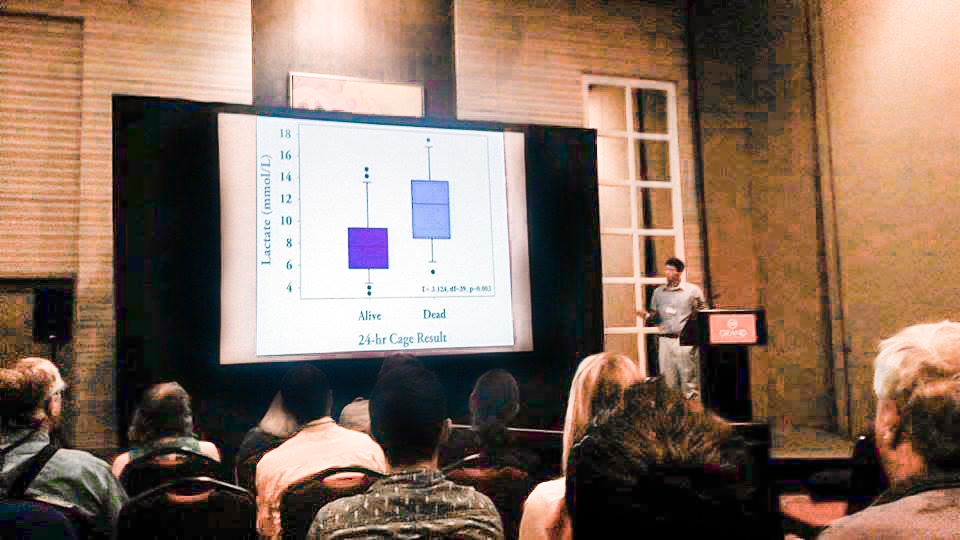In the month of July, Alp Gokgoz, past CEI Research Technician, attended the 31st annual American Elasmobranch Society meeting in Reno, NV, with support from CEI’s professional development fund. Florida State University and Shark Research and Conservation Program graduate student, Brendan Talwar, also attended and presented his research on the post release mortality of the cuban dogfish and the gulper shark. It was a chance to meet many peers in the field of elasmobranch (belonging or pertaining to the Elasmobranchii, the subclass of cartilaginous fishes comprising the sharks and rays) research and learn of their studies and findings while sharing some of the research they had been involved in this past year at CEI.
The presentations and posters included findings on various aspects of elasmobranch biology, including morphology, genetics, ecology and physiology to name a few. Researchers deployed tags and BRUVS, collected DNA samples or even opportunistically examined specimen and behaviours using methods that were familiar and established but occasionally new and innovative. Listening to these talks allowed Alp and Brendan to gain a new perspective on the science behind this taxa and how it is conducted.
After speaking to various peers and attending a workshop on integrative biology in elasmobranchs, the main lesson Alp took from the meeting was that we must ask questions that integrate many aspects of an organism’s biology. In other words, focusing on the system as a whole, using the focus taxa to answer the question. For someone intent on a career in research, this might have been one of the best lessons from the conference. It has changed how he thinks about approaching a question but also guided him towards pursuing a master’s degree.
We hope to see Alp back at CEI in the future as a graduate student!